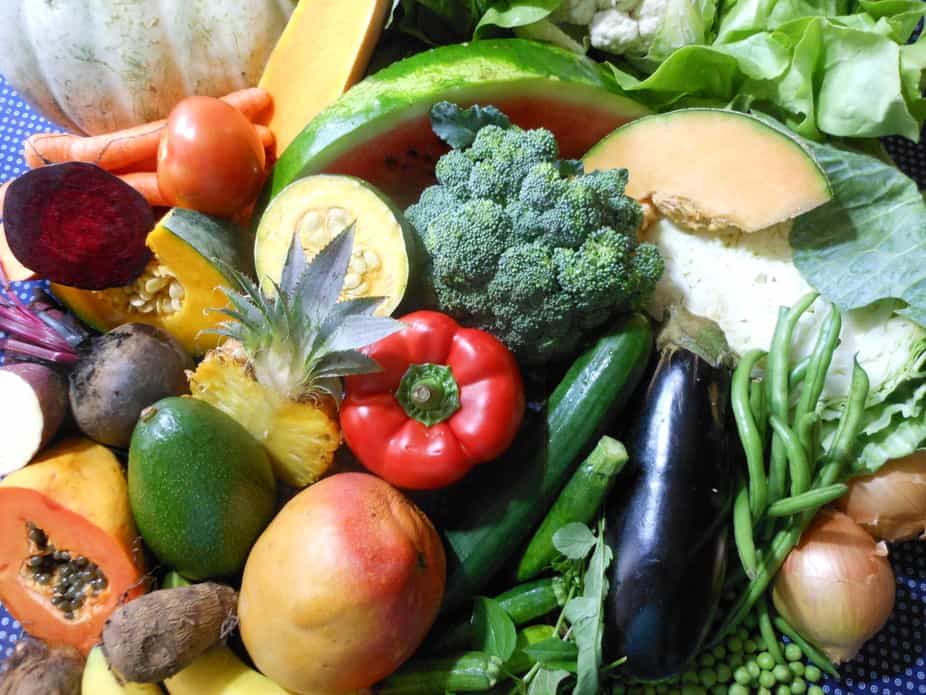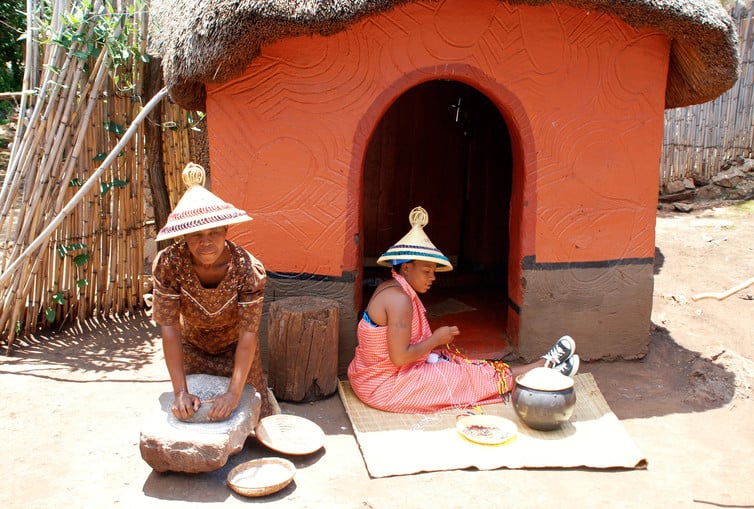
Starvation and extreme under-nutrition are rare in South Africa’s poorest communities. The experience of hunger is related to many different forms of deprivation. There is widespread “hidden hunger,” in the form of micronutrient deficiencies, increasing rates of over-weight and obesity and – perhaps most concerning – stunting and over-weight among small children.
But our recently completed study shows that the problem lies with the largely starch-based diets of rural households. This leads to micronutrient deficiencies and increasing rates of over-weight and obesity. People are not getting the nutrients they need.
Food insecurity and severely inadequate diets constrain development and trap people in poverty. This is despite a myriad of state, private sector and NGO-funded programmes. One of the reasons for this is the lack of knowledge of how agriculture contributes to household nutrition in South Africa.
Information on food, water and seasonal variations that affect poor communities is severely lacking. But it’s necessary to design support programmes that prevent food insecurity from worsening and building resilience to unexpected shocks and stresses.
Taking a holistic view
The study of consumption and production patterns investigated how crop production led to better nutrition by improving dietary diversity. This unique transdisciplinary study took place in four of South Africa’s poorest rural communities.
- Eastern Cape: Ingquza Hill
- Kwazulu-Natal: Jozini
- Limpopo: Maruleng
- North West Province: Ratlou
Poor rural South Africans have a largely starch-based diet – maize and bread – that lacks fruit and vegetables. Most households are able to buy enough maize meal for daily consumption, but the diets lack diversity when it comes to fruit and vegetables. This is worse during winter when even fewer fresh fruits and vegetables grow and water is in short supply. This reduces local supply of fresh produce, pushing prices up and reducing access to an affordable variety of fruit and vegetables. Home production of fruit and vegetables boosts diversity, offering a ready supply of fresh produce to add variety to the diet.

Poor rural South Africans have a largely starch-based diet.
Households with low dietary diversity do not regularly consume the quantities of fruit and vegetables necessary for good nutrition, productivity and development. More than one in four households in the four study areas had experienced hunger in the year prior to the study. January is an especially difficult month for most households. We found high levels of hidden hunger, over-weight amongst adult women and children and stunting in kids. Of concern were the number of young children who were both stunted and overweight.
Contrary to popular opinion, the study found that an encouraging number of households supplement their diets through crop production in the areas where such production is possible – Ingquza Hill, Jozini and Maruleng. The study also found an encouraging number of households engaging in crop production on farmland, home gardens or school and community gardens despite low access to agricultural inputs, support and supplemental irrigation.
The nutritional benefits of crop production
Producing fruit and vegetables allowed households to eat a more diverse diet and helped household members maintain a healthy body mass index. The income from farmland production and irrigated agriculture also allowed people to buy vegetables, fruit but more importantly meat, eggs, fish, milk, roots and tubers.
After studying the consumption and crop production patterns of the households, we were able to determine what could be done to improve their diets and overall nutrition. Many crops can be grown to improve nutrition in these communities. But very few crops will yield food in winter. Irrigation offers the potential of increasing the amount and variety of fresh produce as well as the period of availability.
The study showed that traditional African leafy vegetables like blackjack, cat’s whiskers, amaranth, lamb quarters, nettle, nightshade and sow thistle were some of the most nutritious crops with the greatest potential. This was alongside the more conventional green leafy and orange- and red-flesh vegetables and fruits.
Many challenges faced
Not only does seasonality affect what can be grown to improve nutrition in these communities, climate change in the form of diminishing and changing rainfall patterns has reduced both production and the availability of gathered wild foods. The limitations of water for irrigation dominated the conversations with communities. Climate change has affected growing patterns. Adaptations to production techniques are urgently needed.
The current drought and rising food prices are likely to exacerbate the problem. Sharp increases in the price of maize threaten to heighten the experience of hunger, especially during the winter months in South Africa when there is little fresh produce available in these gardens anyway. The lack of rain threatens all the gains from household crop production, severely limiting dietary diversity.
While irrigating crops holds much promise, the challenges of access to irrigation, even in years of good rainfall, are daunting. In some cases the obstacles are technical.
- In the arid Ratlou site, water is simply not available.
- In Maruleng, a partly functioning irrigation system needs repair and maintenance to serve a wider community, so the problem is financial.
- In Jozini, the issues seem to be political. The vast potential of the irrigation scheme is crippled by conflicting commercial interests, managerial incompetence and stakeholder inequality.
- In Ingquza Hill highly productive, rain-fed terrace farming of staples and livestock has shrunk to small, fenced, home gardens. These rely on rainfall or arduous manual irrigation. Although there is abundant river water, the rugged topography could demand expensive investments to use it.
For many small producers and home gardeners, agricultural inputs and extension services are inaccessible or simply inappropriate. But there is will and energy to adapt farming to changing conditions. An example would be doing this through the conservation of local and more drought-resistant crops.
Researchers, extension staff and rural communities must work closely together to identify practical steps to support crop production that will make fresh fruit and vegetables available all year round. For example, early and late-yielding varieties can extend the seasonal availability of produce while drought-resistant varieties can help to mitigate the effect of drought.
Sheryl L Hendriks, Professor in Food Security; Director, Institute for Food, Nutrition and Well-being and Co-Director DST/NRF Centre of Excellence in Food Security, University of Pretoria and Angela McIntyre, Doctoral student affiliated with the UP Institute for Food, Nutrition and Wellbeing (IFNuW) and the Centre for the Study of Governance Innovation., University of Pretoria
This article was originally published on The Conversation. Read the original article.
related Articles
Five reasons to support draft Labelling Regulations R3337
The are numerous public health benefits of the draft Labelling Regulations R3337. Photo Nathália Rosa/Unsplash. South Africa’s Minister of Health…
Greater Cape indigenous foods back on the map with groundbreaking partnership
Pickled veldkool. Photo: Loubie Rusch. A groundbreaking new partnership between the DSI-NRF Centre of Excellence in Food Security (CoE-FS), Local…
Breede River Municipality hosts unique food security learning journey
“During two sunny winter days in early May, the Breede River Municipality (BVM) hosted a ‘learning journey’, an innovative…



